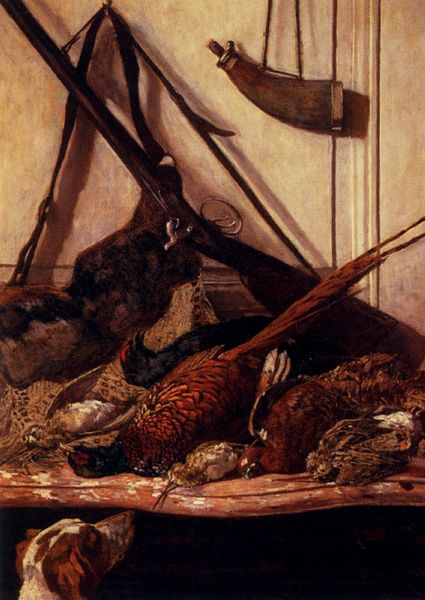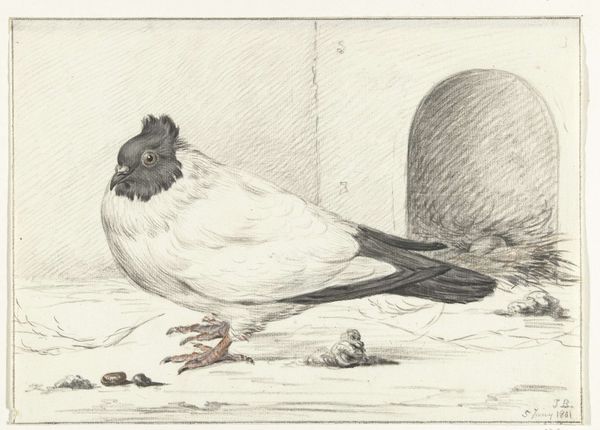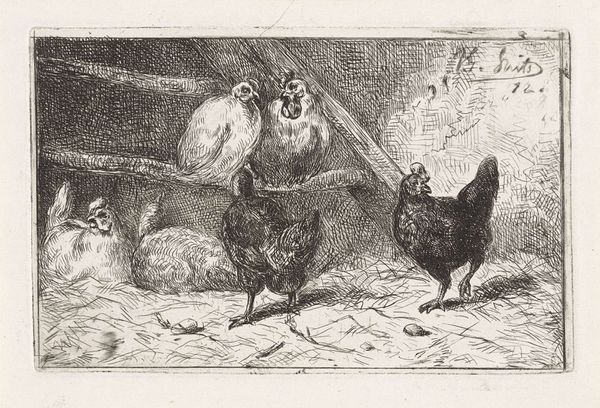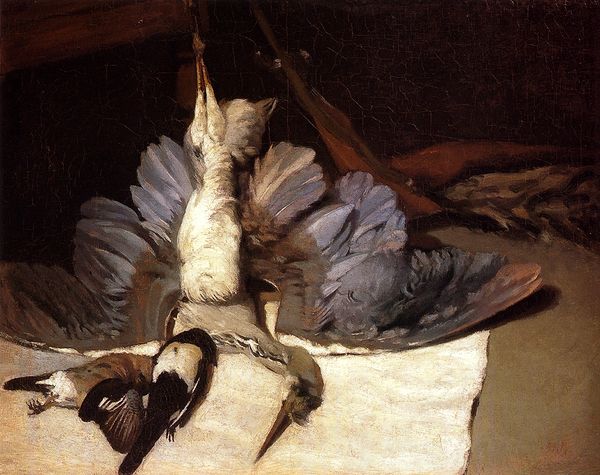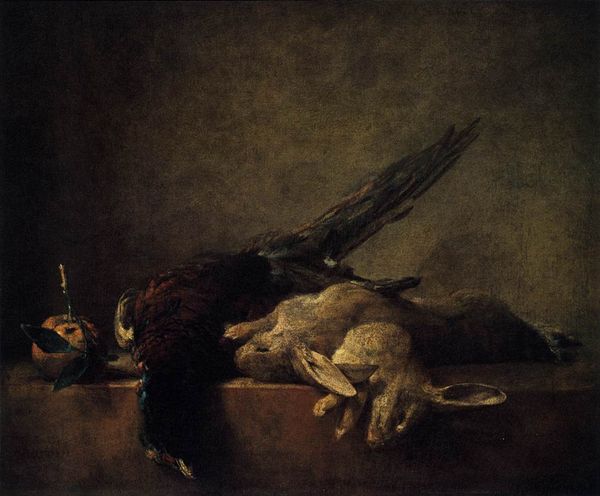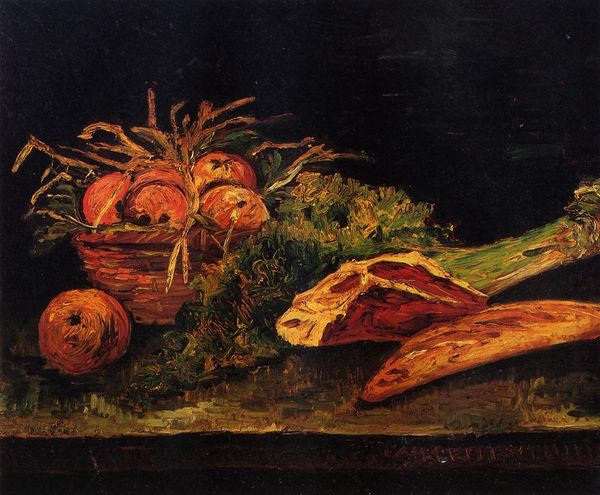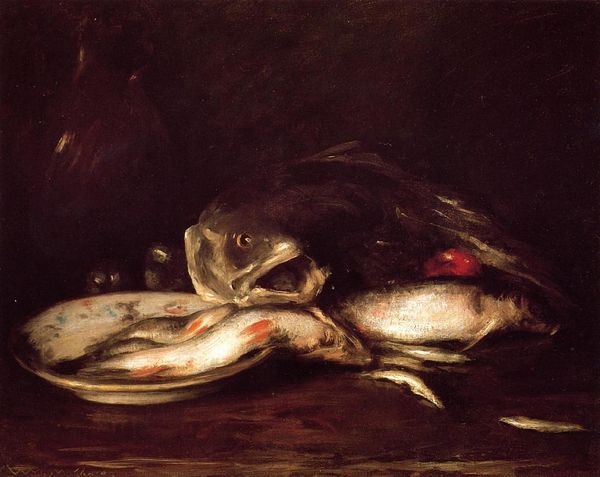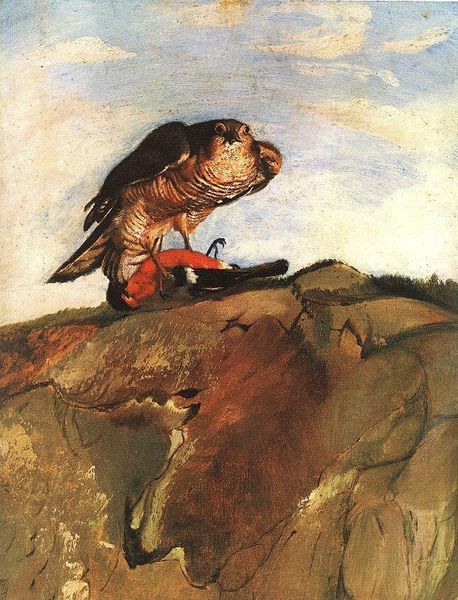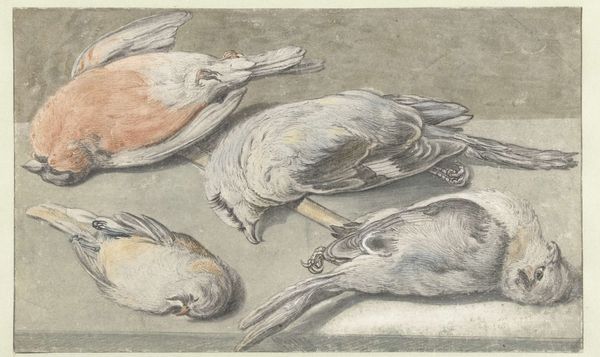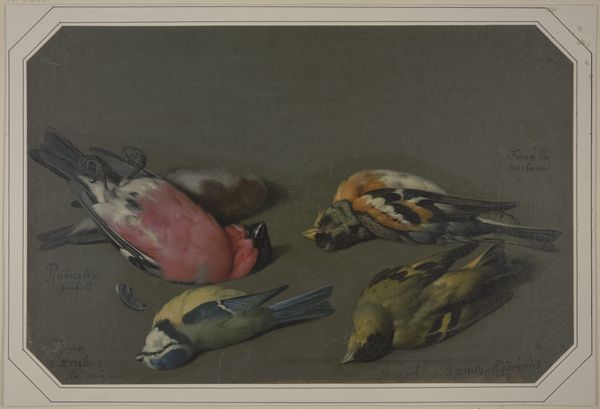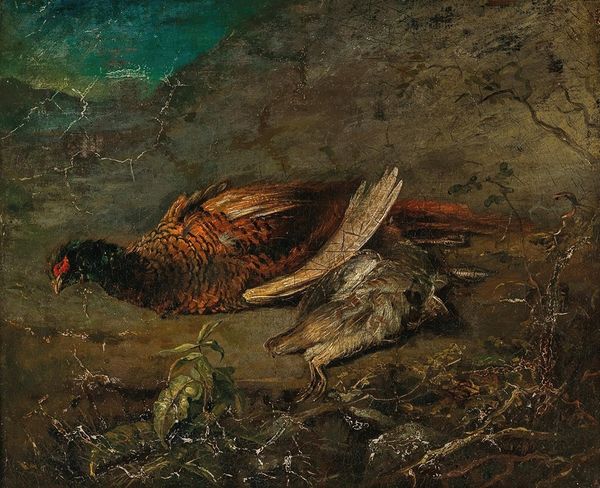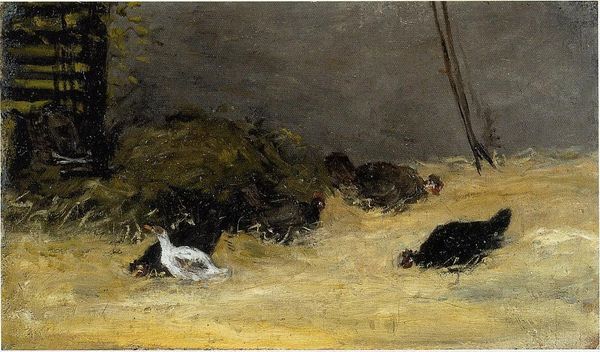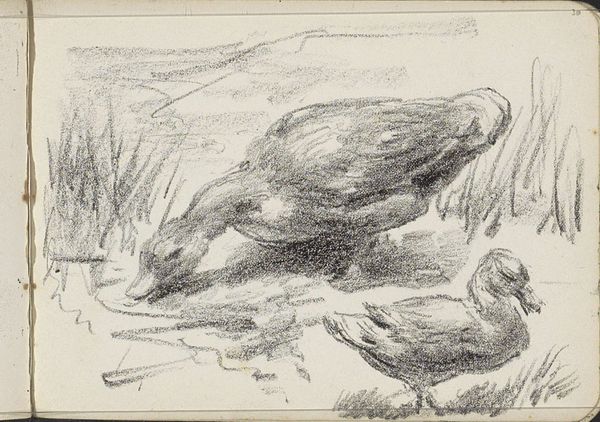
Dimensions: 107 x 158 cm
Copyright: Pyotr Konchalovsky,Fair Use
Editor: Here we have Pyotr Konchalovsky’s 1939 oil painting, “Still Life. Capercaillie,” currently housed in the Tretyakov Gallery. It has a definite feeling of classical still life, though tinged with something a little darker… almost austere. What can you tell me about it? Curator: This painting is an intriguing example of how artists navigated the socio-political landscape of the Soviet Union in the late 1930s. While ostensibly a traditional still life, focusing on dead game birds, we need to consider the implied narrative. Editor: Implied narrative? Curator: Yes. Consider that Konchalovsky was part of the Russian avant-garde, specifically involved in groups pushing for artistic freedom after the revolution. But by 1939, Stalinist artistic policy dictated Socialist Realism, a style celebrating the achievements of the state. Editor: So, where does this painting fit in? It's not exactly celebrating industrial progress. Curator: Exactly. By painting a seemingly innocuous still life, Konchalovsky possibly side-steps direct political messaging. Yet, displaying dead animals could be read as a commentary on the era's suppression. This ‘harvest’ could reflect forced collectivization or loss in a way a more direct approach would be censored. Notice also the careful, almost reverential depiction, elevating a mundane subject matter. Editor: So, it's potentially a subtle form of resistance through traditional imagery. Curator: Precisely! By imbuing a conventional genre with ambiguous meaning, Konchalovsky engages with political themes on a symbolic level, reflecting anxieties around loss and control that the audience of the time would understand on an intuitive level. It brings us back to understanding art’s relationship to censorship and implied public expression in the Soviet era. Editor: Wow, I didn't see that at all! Thanks for reframing my perspective. Curator: It is a perfect reminder that art rarely exists in a vacuum. Thank you, too, it is fascinating to unpack layers of history hidden in plain sight.
Comments
No comments
Be the first to comment and join the conversation on the ultimate creative platform.
